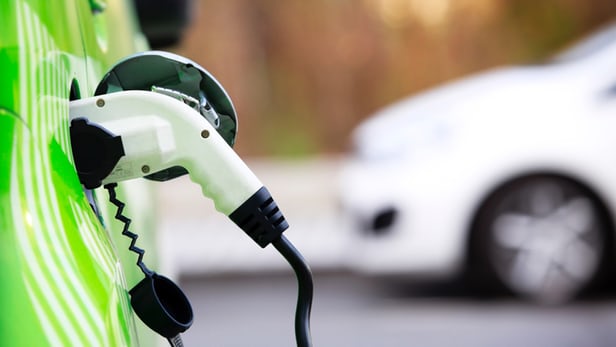Do electric cars really harm the environment less than gasoline-powered cars?

Electric vehicles might look clean and green, but where that electricity is coming from makes a big difference(Credit: kristt/Depositphotos)
Electric vehicles are often touted as a more environmentally friendly than cars powered by gasoline. But all that electricity has to be produced somewhere, so it got us to wondering if EVs really are better for our planet than traditional vehicles.
To find out, as part of our regular One Big Question series (OBQ), we put the question to John B. Heywood, Sun Jae Professor of Mechanical Engineering at MIT.
Here's what he had to say ...
The short answer is: At present yes, electric cars are somewhat better.
But of course, many details matter, especially how the electricity used to propel the car is generated. If coal is a major primary electricity source, then the environmental impacts of battery-powered electric vehicles (BEVs) are worsened. These include the land and water impacts of coal mining and transport, the air pollution that burning coal generates, and the greenhouse gas (GHG, largely CO2) emissions use of coal produces. In most of the world's larger countries today, coal is used to generate some 40 to 60 percent of the electricity produced; this is a significant amount.
In the United States, where coal use in electricity generation has now decreased to less than 40 percent as a consequence of the greening of the grid, BEVs emit about half the GHGs per mile than does a comparable gasoline-fueled car. This comparison is done on a full life-cycle basis – as it should be – from cradle to grave. In Eastern Europe, where coal-based electricity generation is close to 60 percent of the total, the current GHG benefits of BEVs are some 30 percent.
As renewable electricity supply increases and coal use decreases over the next twenty years, these BEV environmental benefits will likely increase on-average to about a two-thirds reduction in GHG emissions, and the air pollution benefits will significantly increase. Note that the fuel efficiency of conventionally-powered vehicles, over the same twenty year period, will improve by about one-third through use of new and better technology. This is good news and helps us all, but it does reduce the comparative benefits of BEVs, some.

There are several major uncertainties and questions in this "look ahead."
Individual people buy and use cars, the market is intensely competitive, and whatever technology we want to use in vehicles must appeal on its merits. Current challenges include the difference in costs of these two propulsion technologies, and the availability and convenience of their supporting refueling or recharging infrastructures.
BEVs are currently more expensive than gasoline vehicles, and now rely on substantial rebates at time of purchase to promote sales. Range anxiety with BEVs due to limited battery electricity-storage capacity (due to battery cost and weight) is of concern: When coupled with the current shortage of recharging stations and the inherently long battery-recharging times, BEV use for at least some driving tasks becomes much less convenient for the user. Then, how rapidly the renewable component of the electricity supply system will grow in different countries, and to what levels, is uncertain. As yet, the long-term availability of the raw materials for batteries, and the environmental impacts of their large-scale material extraction and processing, and battery production, have yet to be adequately examined. It is thought that the environmental impacts of producing batteries will be worse than such impacts for producing engines.
Battery-powered electric vehicles have been purchased by the public and are being used in the real world at the several-hundred-thousand vehicles level total, worldwide, though currently sales are lagging expectations. The total number of cars in use today is approaching one billion. Large reductions in environmental impacts, requires large volume vehicle sales and use. Note, there are alternative forms of plug-in electrified vehicles such as plug-in hybrids, which have an engine on board to augment the electric drive and to recharge the battery when needed. These are also being produced, sold, and used, at comparable scale to BEVs. Plug-in hybrid vehicles provide normal driving range and greater recharging flexibility, and may well, overall, drive the same number of electric miles, annually, as do BEVs.
Major efforts to push the transition from petroleum-based fuel vehicles towards greater use of electrified vehicles are now occurring. The likely extent of their eventual success is unclear.
MIT
